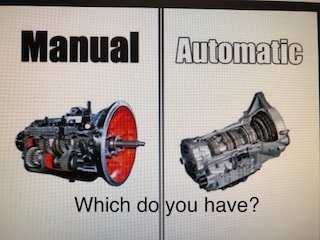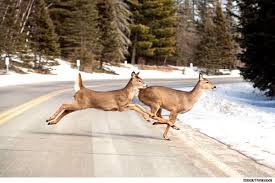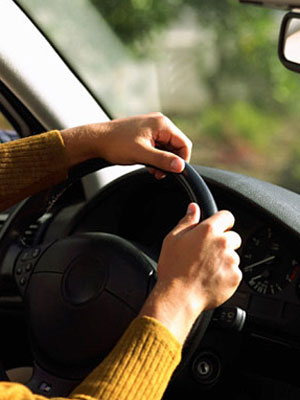Posted on 9/18/2017

Your car’s transmission is among its most essential systems. Without a properly working transmission, your vehicle’s engine would not be able to send power to its four wheels. The gears are among the most critical aspects of a car’s transmission. Both manual and automatic transmissions contain sets of gears. The 6 signs include: strange noises or even grinding coming from the transmission, you experience problems shifting gears, you experience some slippage when shifting gears, unexplained surging of you vehicle, and delay in movement after placing the vehicle in gear. The general recommendation is to flush your transmission every 2 years or 30,000 miles. Fluid Leak. Costs related to repairing your transmission can be as little as $150 or so to replace a defective transmission solenoid and up to $3,000 or more to repair or replace an entire transmission. At Ricks Auto Service, here in Mishawaka, IN, we have a 3year, 36,000 warranty(we stand by our work) ... read more
Posted on 9/14/2017
.jpg)
Many schools today were having 2-hour delays because of thick fog. Fog is another weather-related driving hazard. Temperature conditions in fall increase its likelihood in autumn, especially in low-lying areas, or places surrounded by trees, hills or mountains. Fog not only impairs your vision, it also muffles sound and alters perceptions of distance. If you have to drive in it, drive slowly, taking care not to overdrive your headlamps (never use high beams).-Overdriving your headlights means not being able to stop inside the illuminated area ahead. It is difficult to judge other vehicles' speeds and distances at night. Do notoverdrive your headlights—it creates a blind "crash area" in front of your vehicle. You should be able to stop inside the illuminated area ahead. Sudden, often severe rain storms are a major fall weather hazard. They often come ... read more
Posted on 9/13/2017

The autumn leaves drift by your window. They also pile up on the roadway. Rain falls. The leaves turn to slimy slick patches that are as dangerous as ice. They obscure potholes, curbs and street markings. Watch for them. On the other hand, if you live in areas of the country that are drought-stricken, avoid parking your car over piles of dry fallen leaves (or any dry foliage). Your catalytic converter could spark a fire. Frost and ice. While September frosts are unusual in most parts of the country, they do happen, particularly in shady spots on roadways. Be especially careful when driving over bridges, which can freeze up faster than the rest of the road because they are exposed from the top and bottom. Fall is deer mating season, so the danger of a deer darting onto a road, especially between dusk and dawn, increases now. Running into a deer will definitely ruin your day and your car. They tend to run in small herds, so if you see one, be alert for more. Allow more distance betwe ... read more
Posted on 9/12/2017
.jpg)
For years, we'd been setting our side-view mirrors so that they gave us a view of the back corner of our cars. This is the way it's been done for generations - from grandfather, to father, to us! But we finally discovered something very interesting. The back corner of the car never moves. It always stays in the same exact place. So there's really no reason to keep an eye on it. By moving the side mirrors farther out, you can line up all three of your mirrors so they have minimal overlap -- and you can see everything behind you and beside you. Here's how to do it. Step 1: Start by setting your rearview mirror as you normally would. Then, lean your head all the way to the left so it touches the driver's window. From that position, set your left side-view mirror so you can see the back corner of your car. Now lean the same distance the other way, and set your right side-view mirror the same way. Step 2 -- Left Side Mirror Alignment ... read more
Posted on 9/1/2017
.png)
On a recent phone call one of our customers asked: "Why does my car pull to the right or to the left? Great question! Do you ever feel that your car dragging or "pulling" to the left or to the right? Vehicle alignment. Alignment keeps your tires parallel with one another and even with the ground. If the alignment is off, it can cause a car to pull. Brake Hose. The brake hose distributes brake fluid to your tires. If it gets clogged, fluid is dispensed unevenly to the tires, causing a car to pull as a result. Tires. Over time your tire tread will wear out. If you don’t help distribute the wear evenly by rotating your tires on a regular basis, one will inevitably wear out quicker than the others. Low tire pressure can also be a cause of pulling. An experienced mechanic can ... read more
Posted on 8/30/2017

We all know how weather here in the Midwest changes hourly, with fall upon us, (someone did not let Mother Nature know that it starts officially Friday September 22) with weather hitting in the high 40’s at night. We need to give our car some TLC for Fall. Here are 10 practical tips to help get your car ready for fall. Check the brakes and tires. Inclement weather and associated road conditions and other hazards require good stopping power. That means good brakes and tires. When we change your Oil we do a healthy car inspection that will let us know what you need, for tires and brakes Check the lights. Walk around the outside of the car and check the operation of all lights: headlights, taillights, parking lights, brake lights and emergency flashers( it helps to have someone inside vehicle hitting those lights). Replace all broken bulbs and those that have stopped working. Make sure all lights are clean. Replace wiper ... read more
Posted on 8/29/2017
.jpg)
Proper maintenance and replacement of a car's ball joints is necessary for safety. The front ball joints allow the front wheels and suspension to move back and forth as well as up and down when the steering wheel is turned and the vehicle is traveling over the road. Excessively worn ball joints can break, causing the wheel to collapse(see picture) and control of the vehicle is gone. However, the vehicle typically gives indications that the ball joint is BAD long before a failure of this magnitude occurs. Common signs include clunking noises and excessive vibration from the front and you may start steering to the right or left unintentionally. #maintenance #balljoints #noises
Posted on 8/22/2017

1. Running the tank low on fuel Leaving your tank to get dangerously empty allows the dirt, rust and grime that sits at the bottom of it to get sucked into the system, attacking the fuel pump and filters. 2. Resting your hand on the gearstick Leaving your hand resting with a certain amount of force will make the forks rub against the rotating collar causing unnecessary wear. 3. Resting foot on the clutch pedal Riding the pressure plate against the clutch causes heat and wear – and new clutches don’t come cheap. 4. Revving the engine before it’s warm Just like athletes, cars need to warm up first. When you start the engine, the oil pump pushes oil around the system and this oil takes time to fully circulate. You should leave the engine to run for 10 seconds before setting off. 5. Delaying regular maintenance It might be a pain keeping up with services, and expensive, too, but ... read more
Posted on 8/11/2017
.jpg)
While we may enjoy the hot temperatures we need to remember that high temperatures can take a toll on car fluids, leading to a breakdown and possibly a major repair. Conduct a fluid check now, and you may avoid problems that leave you stranded miles away from the beach later. Here are the five essential fluids to check in the summertime: Coolant. This is known as your antifreeze or radiator fluid—keeps your engine from overheating and freezing plus it protects the aluminum engine parts. If cloudy or rusty please let us know so we can flush and replace. Motor Oil. Always check with your owner’s manual but take into account if you are a hard or tough driver or it’s extremely hot make sure you top off as needed keeping an eye on what color it is. Brake Fluid. This is a sealed system, check the brake fluid reservoir to verify the right level, fluid decreases as the pads wear, but make sure that you don’t have any leaks. Car Battery. You can’t check the lev ... read more
Posted on 8/9/2017
.jpg)
Have you had your Transmission Fluid looked at lately? When was the last time you had it changed? The Manufacturers recommend for a manual transmission fluid changed every 30,000 to 60,000 miles, but under heavy-duty use about every 15,000 miles. Automatic transmission vary from 30,000 to never or 60,000 to 100,000, depending on your driving. The transmission fluid is a slippery liquid that is a lubricant for all of the moving parts inside your transmission. For a Manual transmission the problem is fluid contamination, which occurs when bearings and gears in the transmission wear out, leaving particles that float around in the lubricant. With an Automatic transmission more heat is generated and the fluid actually degrades and breaks down with use, also as parts wear down it also becomes contaminated. WHAT IF I DON’T CHANGE IT REGULARLY? By not changing your transmission fluid regularly, you are letting the transmission lubricate itself with metal shavings and other con ... read more